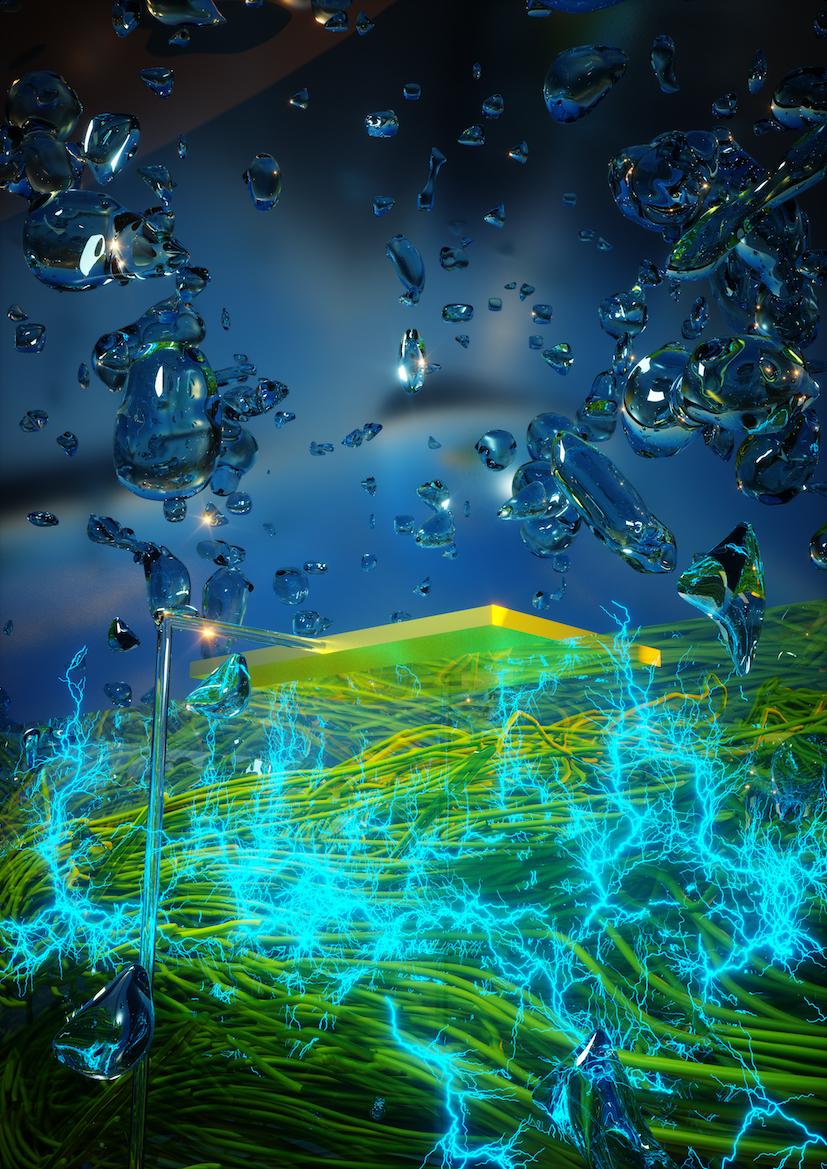
Researchers at the University of Massachusetts Amherst have developed a device made out of bacterial nanowires that uses only moisture from the atmosphere to generate a current of electricity—basically, this device can produce energy out of thin air… literally. The device employs nanowire structures grown from a type of bacterium known for its unusual properties, and may provide electricity to regions of the world that lack the resources needed to produce their own energy.
Geobacter sulfurreducens is part of a genus of bacteria that was first discovered in 1987 in the mud of the Potomac River, and has a number of unusual properties, including the ability to produce nanowire structures that can conduct electricity. While experimenting with the microbe to develop sensor devices, a PhD student, Xiaomeng Liu, noticed that when electrodes were attached to the sample they produced a current in the wire.
“I saw that when the nanowires were contacted with electrodes in a specific way the devices generated a current,” Liu recalls. “I found that that exposure to atmospheric humidity was essential and that protein nanowires adsorbed water, producing a voltage gradient across the device.”
The discovery led to the development of what the researchers are calling Air-gen: a film of nanowires produced by G. sulfurreducens only 7 microns thick—roughly one-tenth of the width of a human hair—is placed between two electrodes, with the film itself being exposed to the air. The assembly generates a current of electricity, with one square centimeter (0.16 square inch) of film producing a little over 0.5 volts at 17 microamperes. While the energy this singular device produces might seem insignificant, its power can be scaled up by connecting more Air-gen devices into the circuit.
“The ultimate goal is to make large-scale systems,” explains electrical engineer Jun Yao, regarding the device’s potential. “For example, the technology might be incorporated into wall paint that could help power your home. Or, we may develop stand-alone air-powered generators that supply electricity off the grid. Once we get to an industrial scale for wire production, I fully expect that we can make large systems that will make a major contribution to sustainable energy production.”
But how does it work? The researchers theorize that moisture from the surrounding air produces a diffusion of protons in the nanowire material; since protons are the positively-charged particle that makes up the nucleus in regular atoms, electrons—their negatively-charged counterparts—are produced to balance the equation out, and flow as an electrical current.
Although similar devices have been produced in the past, Air-gen’s predecessors could only generate current for less than a minute before being depleted, unlike the continuous current this new process produces. Currently, the only roadblock to scaling Air-gen up to produce more power is the limited rate that G. sulfurreducens can produce its nanowires. However, Geobacter’s discoverer, Derek Lovley, says that they can genetically engineer a more common bacteria like E. coli to produce the structures, in the same way the same microbe was genetically altered in the late 1970s to produce human insulin on an industrial scale.
Subscribers, to watch the subscriber version of the video, first log in then click on Dreamland Subscriber-Only Video Podcast link.
Beautiful website, fascinating article Team Whitley. I imagine the potential of this discovery,yet shudder at how corporate greed will ‘buy’ up the Air-gen pipeline frm production thru delivery to exploit and degrade the lives of everyday people.